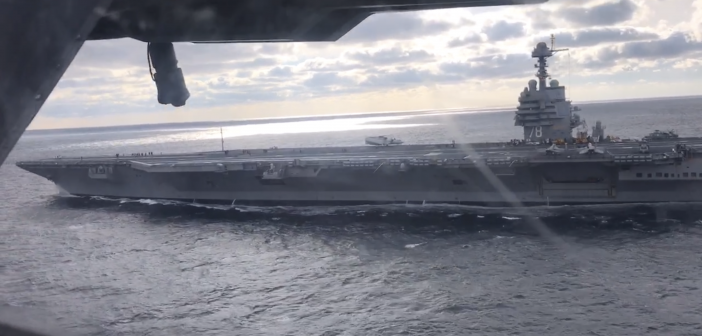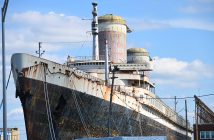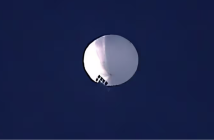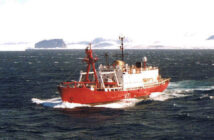In a Competitive World, the US Navy Can’t Afford More Costly Major Program Missteps
Over the past several months, the US Navy has been on a full-court press to show the world that it’s newest $14 billion super carrier isn’t a dud.
Once sarcastically referred to as ”Building 78,” senior leaders are stressing that the ship is well on its way to becoming a game-changing warship.
Earlier this week, Navy acquisition chief Hondo Geurts accompanied a small group of reporters to the ship, the latest batch of journalists to be given free access to the ship’s leadership and crew.
Geurts, Ford’s commanding officer, Capt. JJ “Yank” Cummings, and his officers and sailors clearly telegraphed that the ship has indeed turned a corner thanks to a lot of hard work.
Cumming’s first-class leadership has inspired the Ford team and imbued it with a can-do spirit to distance the ship’s troubled past and focus on its bright future.
Geurts has focused on setting the conditions for long-term success by working with and incentivizing major contractors whether shipbuilder Huntington Ingalls Industries to catapult and arresting gear maker General Atomics to radar maker Raytheon and thousands of others to bend to the task.
It is welcome news given delays getting the ship into the fleet has had a cascading effect, raising concerns whether the aging Nimitz and Eisenhower will have to remain in service longer.
It is equally welcome that the Navy is finally realized the benefits of talking openly about its challenges and progress. The former lockdown on information only fueled rumor, speculation and lawmaker and journalists’ ire. Worse, it gave the appearance that the Navy was doing nothing to solve the Ford’s problems, only engaging fully a few months ago.
Yes, Ford is expensive, late and over budget. She is also coming into service at a time when there is a robust debate about whether carriers constitute a critical capability or vulnerable liability. Acting Navy Secretary Tom Modly has been candid about his concerns about the vulnerability of the current carrier fleet — arguing that a new design may be necessary after the fourth of the class, the Doris Miller is delivered.
That said, Modly has also made clear it’s vital the Navy get the Ford-class right. He’s right. For the foreseeable future, big-deck aircraft carriers will be critical national capability and capital asset around which the US Navy will be organized until the service determine what new kind of smaller ship would be knitted into a more distributed architecture.
And the Ford itself will prove a step change in naval aviation on every metric — from higher sortie generation, survivability, maintainability, reliability, connectivity and manpower savings.
As the Navy ramps up its great power game, it must learn Ford’s lessons to ensure major new programs like ballistic missile submarines, frigates, a surface warship and large- and medium-displacement unmanned vessels, a large unmanned tanker aircraft and more are successfully and quickly executed.
First, don’t pack too much innovation into a single platform. At the direction of then Defense Secretary Donald Rumsfeld, the Ford is packed with too much that was too new — reactors, engines, catapults, arresting gear, electrical system to handle more than 100 megawatts of power, electromagnetic elevators, a dual-band radar system, galley equipment and even a innovative trash incinerator. Each of these systems has had its challenges, especially bomb and aircraft elevators that have proven far harder to resolve than imagined.
Second, design systems with the intimate involvement of troops and put the gear in their hands as soon as possible. Ford has made dramatic progress over the past months because of a prolonged post-shakedown availability that tackled engine, catapult, arresting gear and radar challenges. Sailors working closely with contractors and their Naval Sea Systems Command teammates were instrumental by applying their experience, innovative spirit and good old fashioned hard work. (Of 2,700 aboard Ford, 2,200 are crew and the remaining 500 are Navy personnel and contractors, 100 from HII alone.)
It’s this approach that is systemically resolving the ship’s elevator problems. Sailors identified design and production problems, realigning guides, relocating and recalibrating limit switches to get three certified so far and another four by year’s end.
Third, speed is critical in identifying a military problem that needs fixing, decide how best to do it and then execute as quickly as possible. The longer programs take, the higher their cost and knock on effects. For example, some fear that the longer it takes for Ford to be qualified for fleet duty, the longer the Navy’s oldest carrier, the Nimitz, must remain in service.
Fourth, the Navy — nor any of the other services — can afford to get programs wrong, whether conception or execution, that waste both money and the most precious of all resources, time.
Although Ford was conceived nearly two decades ago, with construction starting in 2009, it’s astonishing that the Navy’s newest carrier was built without accommodating the newest fighter it will operate, the F-35. It’s equally stunning that only one of the Navy’s carriers — the USS Carl Vinson — has been equipped for a sustained deployment with the jet.
Congress has directed that Kennedy be modified to operate the jet from the start, although its unclear whether that will be possible at this point in its construction. Enterprise and Miller will be built to operate F-35s, while Ford will have to wait for its first major overhaul to be fitted with all hat’s needed to make maximum use of the F-35s potent capabilities.
That’s the kind of baffling force-wide misfire that suggests to adversaries that the Navy isn’t as on the ball as it needs to be and may be making similar oversights elsewhere in its vast portfolio.
Getting things wrong not only costs money, but time, which is the Navy’s — and the nation’s — most precious commodity.
Modly, Geurts and other leaders across the Navy know the urgency of the task and are working hard to accelerate processes make better decisions and execute them more quickly. Their language has been encouraging. It’s vital to show results.
As the margin between America and its allies and their adversaries shrink, deterrence will become ever more important. Getting it wrong won’t just risk embarrassment and criticism, but may prompt miscalculation.




